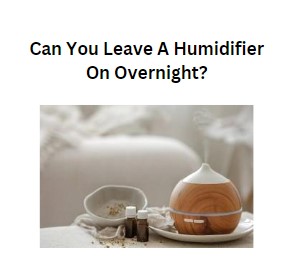Imagine your home as a cozy sanctuary, a refuge from the chaos of the world outside. Just as a warm blanket wraps you in comfort during chilly nights, a humidifier envelops your living space with soothing moisture. But as the hours stretch into days and nights, a vital question surfaces: Can you leave a humidifier on 24/7?
To unravel this conundrum, we must delve into the essence of humidity itself. Humidity is the invisible companion of comfort; it nourishes our skin, soothes our respiratory passages, and lends vitality to the air we breathe. However, like a well-tended garden, it requires balance. Too little moisture can lead to dryness and discomfort, while too much can create an environment ripe for mold and mildew.
The concept of leaving a humidifier on continuously evokes a sense of safety. Imagine it as a lighthouse in a stormy sea, continuously casting its beam to guide sailors to safety. But this beacon of moisture also demands respect. Understanding the intricacies of how humidifiers operate and their effect on your space is essential to maintaining that delicate equilibrium.
Firstly, the type of humidifier plays a pivotal role in determining whether it can be left on indefinitely. There are various types—evaporative, ultrasonic, steam vaporizers, and impeller humidifiers. Each possesses its unique characteristics and operational quirks. For instance, evaporative humidifiers work by drawing in dry air and releasing it as cool moisture. This process inherently limits the humidity levels since they have built-in mechanisms that auto-regulate moisture output. Therefore, an evaporative humidifier can potentially be left on indefinitely without the risk of over-saturation. In contrast, steam vaporizers release steam into the air and could lead to excessive humidity if run continuously without monitoring.
Another critical factor to consider is the size of the space in which the humidifier operates. A small, tightly sealed room can quickly reach a humidified state, akin to a sauna, while a spacious living area can benefit from a continual infusion of moisture. One must also consider air circulation; stagnant air can become a breeding ground for mold and bacteria if humidity is allowed to stagnate. Thus, a continuous flow of air is vital, transforming a humidified room into a more dynamic and health-friendly environment.
Additionally, humidity levels must be conducive to health. The ideal relative humidity level hovers between 30% and 50%. When humidity drifts outside this range, the allure of a 24/7 humidifier can swiftly dissipate. Here lies the crux: while leaving your humidifier on does promise comfort, it also introduces the potential for adverse effects. Overly humid environments foster the very mold and mildew that one seeks to avoid, creating a paradox where comfort may lead to discomfort.
Regular monitoring of indoor humidity levels is imperative. Consider investing in a hygrometer—an inexpensive yet invaluable tool that tracks humidity levels. This device acts as a sentry, safeguarding your home’s atmosphere. With diligence and care, you can maintain healthy humidity levels throughout your day and night routines.
Moreover, one cannot overlook the maintenance needed for continuously running humidifiers. Think of it as tending to a garden, where neglect can result in a weed-infested mess. Without regular cleaning, humidifiers can become hotbeds for bacteria, leading to health risks when circulated air is inhaled. It’s essential to adhere to the manufacturer’s guidelines on cleaning and filter replacements. Neglect can turn that comforting mist into a source of malaise, transforming your sanctuary into an unwitting host for illness.
However, there may be environments where leaving a humidifier on for prolonged periods is not only acceptable but beneficial. For example, during the arid winter months, when heating systems dry out indoor air, continuous humidification can alleviate symptoms such as dry skin, sinus congestion, and irritated eyes. Similarly, homes with houseplants often benefit from a humidifier’s presence. The steady release of moisture promotes a healthier environment for foliage, allowing plants to thrive as they bask in their ideal conditions.
In situations wherein the humidifier will be left on, it’s wise to opt for models equipped with automatic shut-off features. These innovations resemble the wise sage guiding you through the tempest. When water levels become dangerously low, these models will pause operations—ensuring that safety and efficiency reign supreme. In such designs, one can find peace of mind, allowing the humidifier to run while relinquishing the relentless worry of over-humidification.
As we navigate this binary world of comfort and caution, always revert to your intuition. Trust your senses—if the air feels excessively moist, or if surfaces within your home start developing dampness, it might be time to turn the humidifier off or adjust settings accordingly. Much like a finely tuned orchestra, your living space thrives on harmony, where humidity plays its part but not at the expense of discord.
In conclusion, leaving your humidifier on 24/7 can be a double-edged sword, offering a blend of solace and risk. Familiarize yourself with its operational nuances, heed the environmental signals, undertake thoughtful maintenance, and listen to the rhythms of your home. Ultimately, the choice rests in recognizing the fine line between comfort and excess, creating an atmosphere where both you and your surroundings can flourish harmoniously.
